These methods for heating a chicken coop without electricity are easy to do, and safer than other heating methods. Making a few modifications to your coop will keep your chickens cozy and comfortable throughout the winter
.
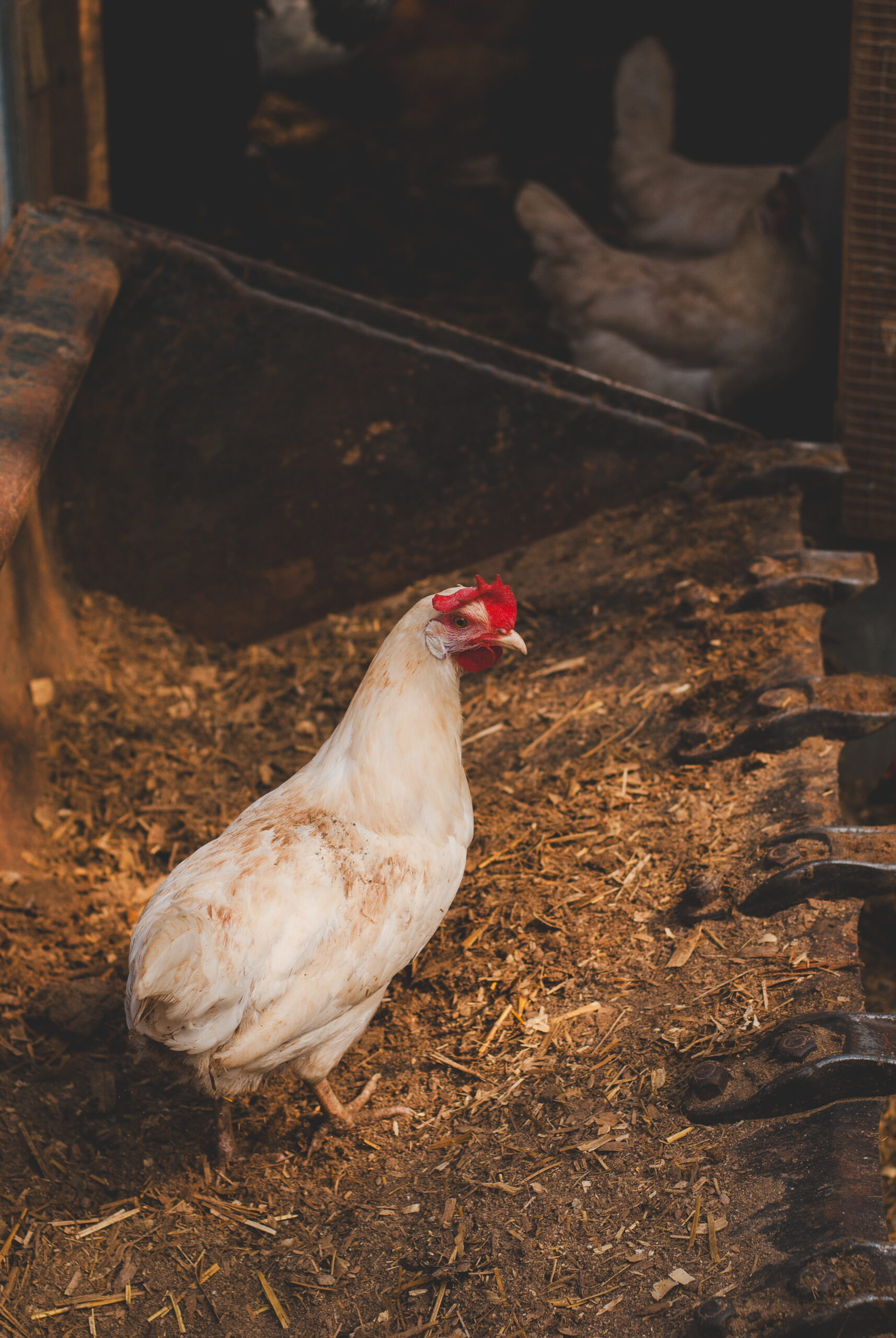
*This post may contain affiliate links which means I make a small commission at no extra cost to you. Read my full disclosure here.*
Deep Litter Method
The deep litter method is a great way of heating a chicken coop without electricity. This method uses bedding and the chicken manure to create a compost that naturally produces heat.
Compost is a mixture of nitrogen (from the poop), carbon (from the bedding), water, and air. When these elements are combined in the right proportions, microbes in the compost will start to break it down producing heat as a byproduct. A hot compost pile can produce an internal heat of around 140°F keeping your flock nice and warm.
To accomplish the deep litter method you’ll need to start with a bottom layer of pine shavings. I have an earth floor in my coop, but this method can be used on concrete as well. Every couple of weeks you’ll want to turn the litter with a rake. The chickens will also help turn the litter while they are scratching around. After turning the litter, add another layer of shavings.
For even more insulation and warmth in the coop, consider adding straw after the initial bottom layer of pine shavings. The straw is hollow which will help to trap warm air. Straw will also break down just like shavings, and produce heat through composting.
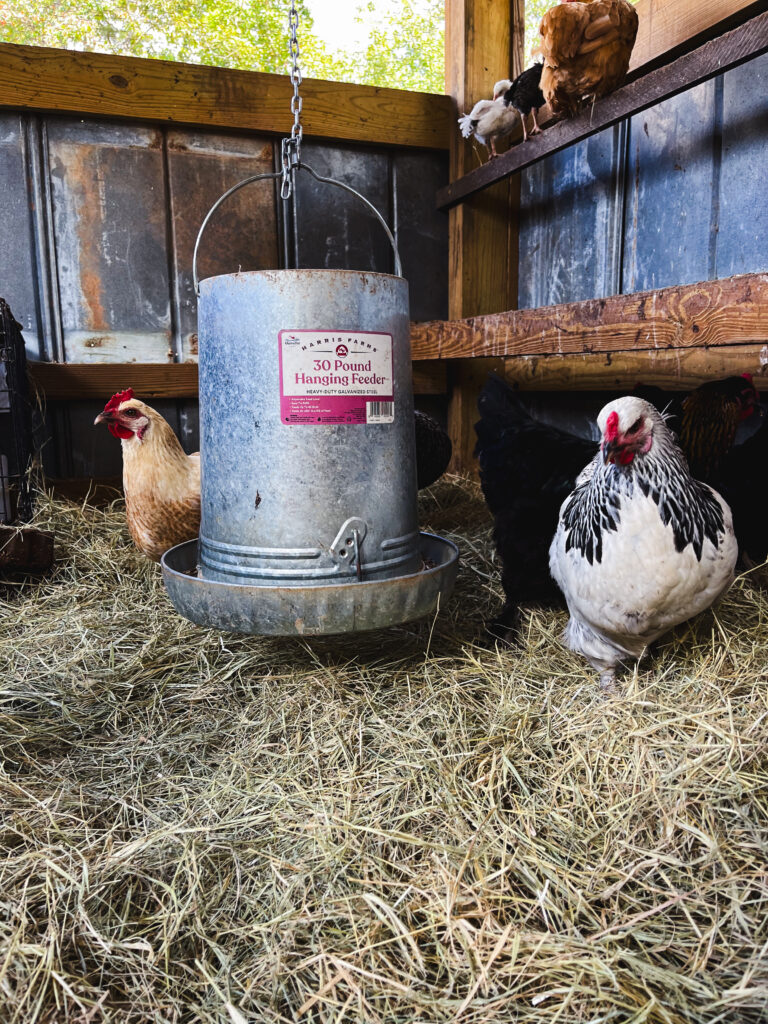
Heating a Coop by Keeping it Draft Free
Another way to keep your flock warm in the winter is to ensure that the roosting area is draft-free while still allowing for sufficient ventilation. Drafts can be harmful to chickens, causing them to experience cold stress.
To prevent drafts, you can insulate the coop’s walls and ceiling and seal any gaps or cracks. I live in an area that has extremely hot humid summers, so my coop has an upper area of wire. To keep the flock warm in winter I cover the wired areas with plastic sheeting.
You also need to make sure that the coop is well-ventilated to prevent moisture buildup and high levels of ammonia, which can harm your chickens’ respiratory health. Too much moisture will also cause frostbite.
This can be done by incorporating vents into the roof of the coop. You could also add windows that can be opened or closed as needed to allow fresh air to circulate. If you notice a strong ammonia odor, you may need more ventilation.
By finding the right balance between warmth and ventilation, you can ensure that your chicken coop is a cozy and healthy space for your chickens to live in during the winter months.
Adding The Correct Type of Roost
Roost design is a great way to help your chickens stay warm in the winter. Instead of round roosts, use 2×4 boards instead. Install the boards with the flat side upright so that the chickens can rest their feet flat on the board. During cold weather, they can keep their feet underneath their bodies preventing frostbite on their toes.
Also installing your roosts away from direct drafts and higher in the coop can help keep chickens warm.
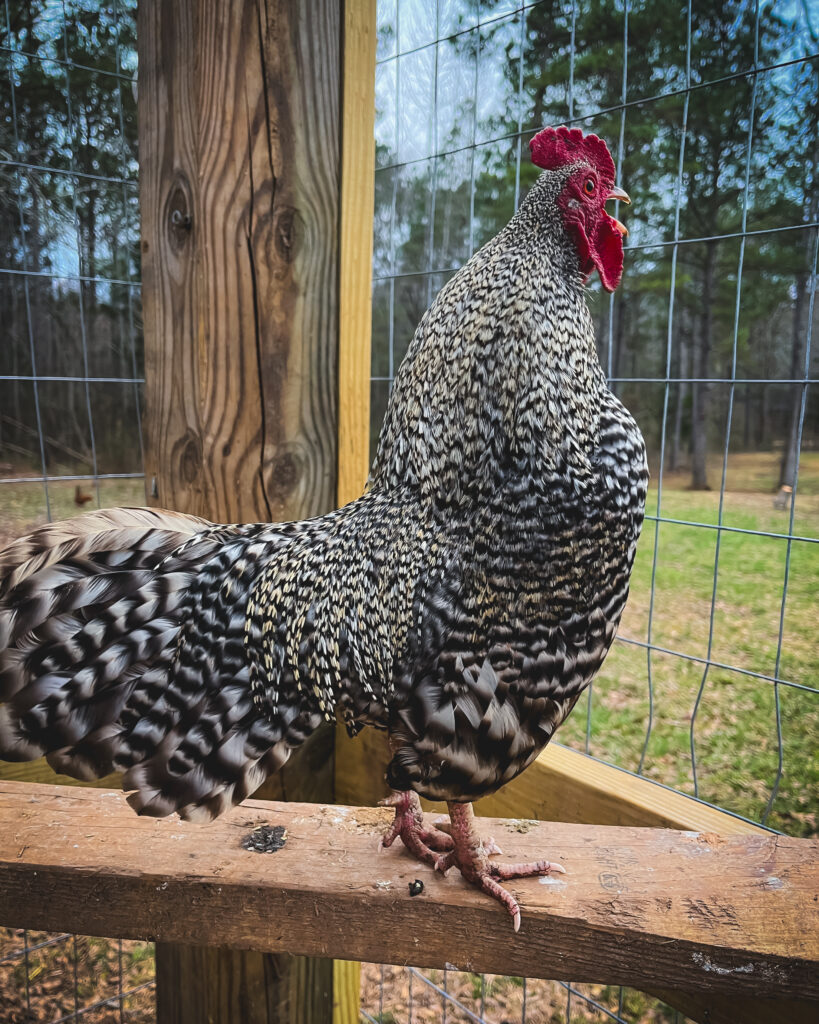
Keeping Water Fresh and Defrosted
Providing chickens with fresh water during cold days is essential. Chickens will quickly become dehydrated and be more susceptible to cold weather without adequate water.
A chicken’s water intake is closely linked to maintaining their core temperature.
While heated chicken waterers are great, they need a way to plug them in. There are a few methods you can use to keep your flock’s water from becoming a frozen brick during the winter months without electricity.
Try black rubber waterers. Rubber doesn’t conduct temperatures as well as metal waterers do. This will prevent the water inside from freezing as quickly. Also, the black color will absorb the sun’s heat and hopefully keep the water above a freezing temperature.
Try floating ping pong balls on the surface of the water. Floating ping pong balls on the surface will help to prevent the water from being still and freezing. The balls are lightweight and will naturally float around on the surface of the water creating enough friction to prevent freezing solid.
Store the water inside the coop. While you want to prevent as much moisture from inside the coop as possible, keeping the waterer inside will help to block some of the wind and prevent the water from freezing.
I suggest putting the waterer into a corner to help minimize mess. However, putting the water inside the coop will also prevent it from being warmed by sunlight. You’ll need to choose what works best for your situation.
Try pouring hot water over the existing water to defrost it. If you are able to check your chicken’s water multiple times a day, carry a pitcher of hot water with you to defrost any frozen water they may have in their bowl. This is more labor-intensive than the other methods, but it will help to make sure they have enough water.
Providing Adequate Food For Your Flock During The Winter
Giving your flock a higher protein food during the cooler months will ensure they have enough energy to maintain a higher metabolic rate. Chickens don’t lay as many eggs when the days are shorter, so they are fine with a higher protein feed. If you are concerned about them getting enough calcium, provide them with a calcium supplement like crushed oyster shells free choice in their coop.
Giving your flock scratch grains will also help to maintain their body heat. Scratch grains are like junk food for chickens so be careful not to overfeed the grain to them. However, giving them a little bit in the afternoons will help them to stay warmer. The grains require more energy to digest which will produce heat in your birds.
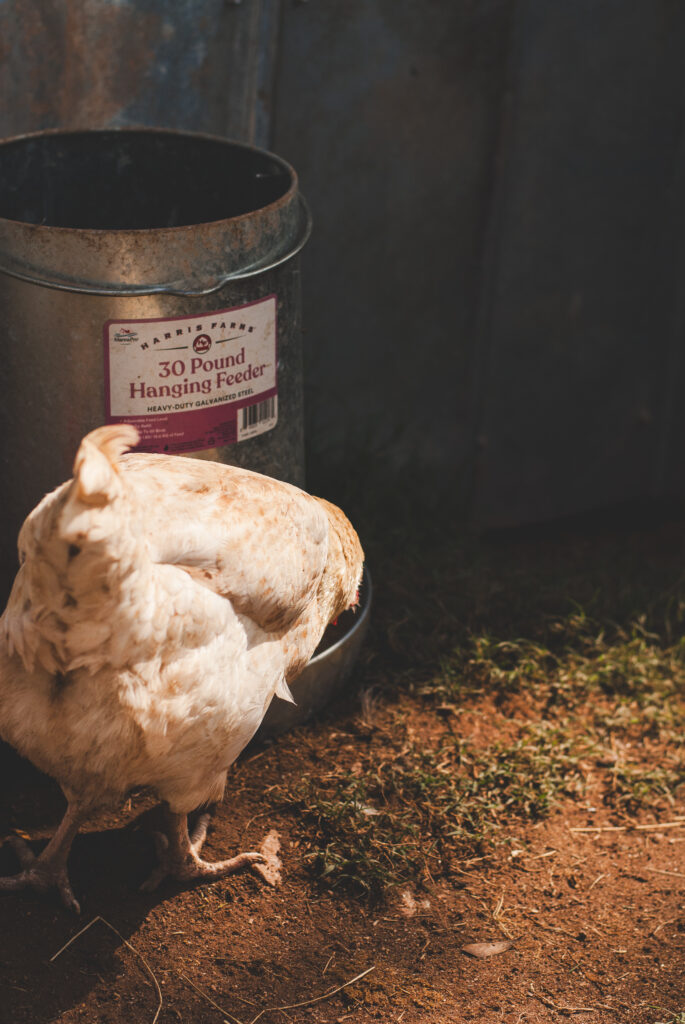
Flock Numbers Will Help Increase Coop Warmth
Increasing your flock numbers will also help with keeping the coop warm in the winter. Chickens naturally produce a higher body heat in the range of around 105-107° F. The more chickens you have in the coop, the more heat that will be generated.
They will also huddle together to help each other stay warm. However, if your coop is overcrowded this can cause the smothering of weaker chickens as well as higher levels of ammonia in the coop. Keep in mind that chickens need at least one foot of roost space each.
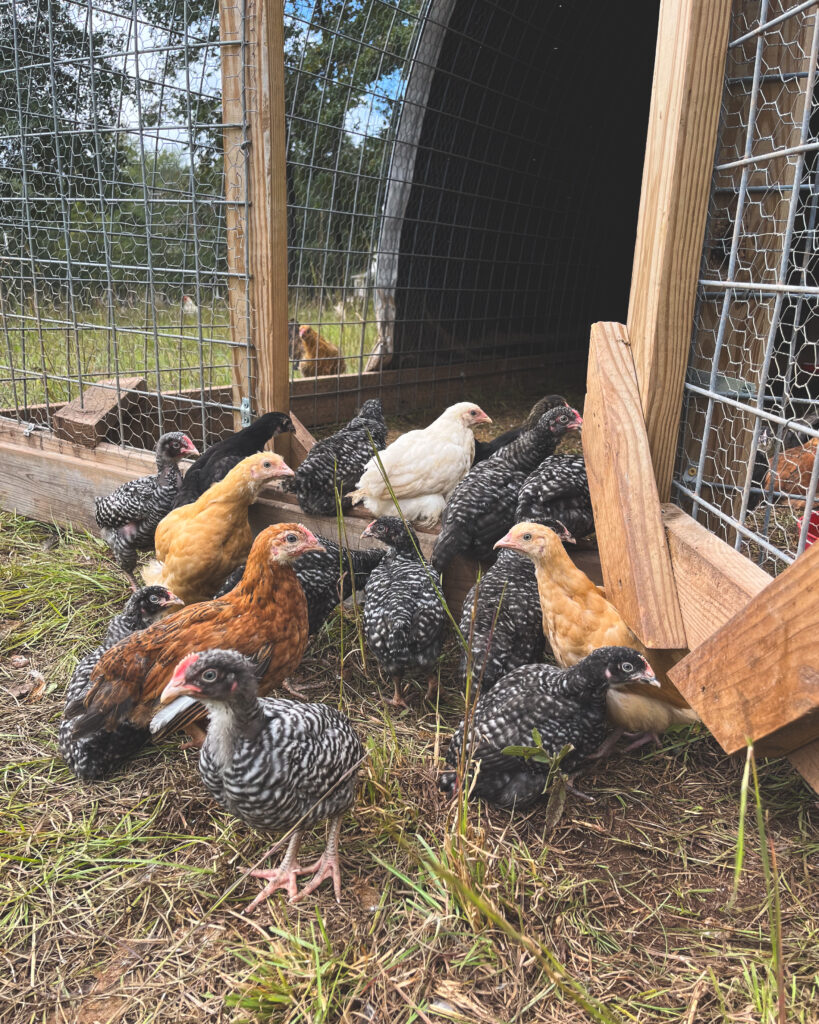
Designing a warm coop
If you haven’t built your coop yet, you can design it in a way that maximizes warmth in the winter. As I mentioned before, my coop has a wire around the top third of the coop. This allows for plenty of ventilation in the hot summer, and in the winter I add plastic sheeting. The clear plastic sheeting acts as a sunroom allowing natural light to warm the coop naturally.
This method is also great for the run. Add plastic sheeting or clear greenhouse panels to the run to give the chickens a sunroom to visit when it’s cold. You never want to contain your chickens in a coop and restrict them from moving around. They will go back inside on their own if they’re too cold.
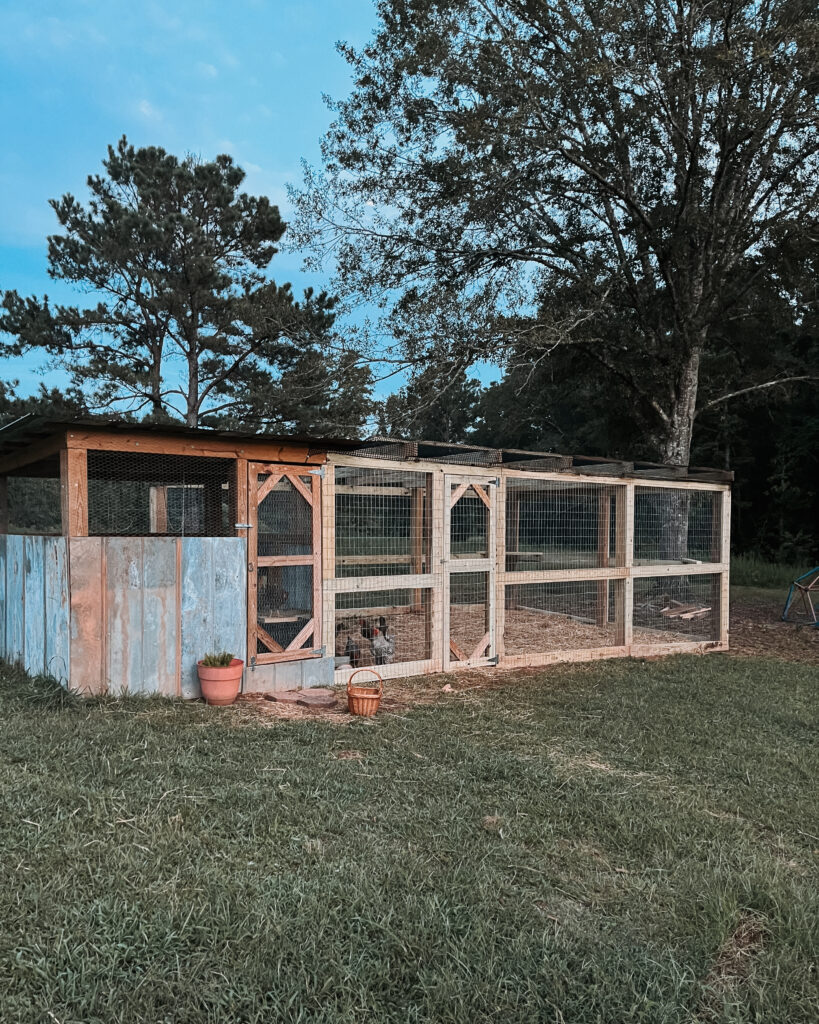
Closing
Chickens are very hardy birds. They can handle many temperature extremes quite well. It’s important not to heat their coop artificially as you’ll run the risk of fire. Also, if the birds are acclimated to the cold it’s better to shock their bodies by going from a very warm coop to the cold outdoors.
Closely monitor their behaviors to ensure they are healthy, have plenty of water, and have access to plenty of high-protein food.
Provide the flock with a draft-free, ventilated coop and your chickens will be happy and comfortable throughout the winter.
If you enjoyed this article, please share it! Thank you for visiting my farm
Enjoyed both articlez very much.
Thank you!
You’re so pretty.
Thank you!